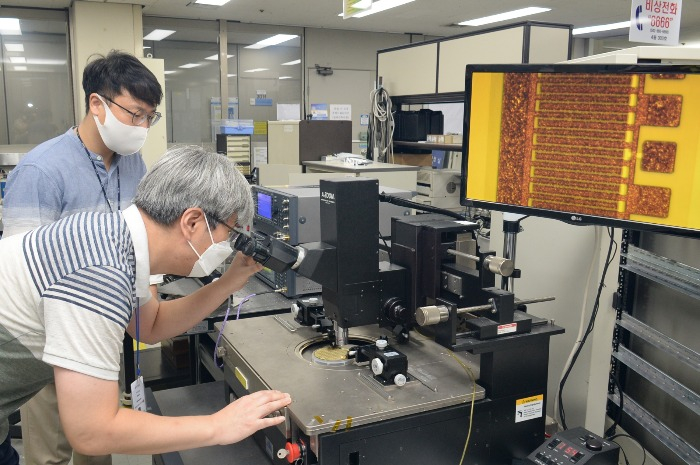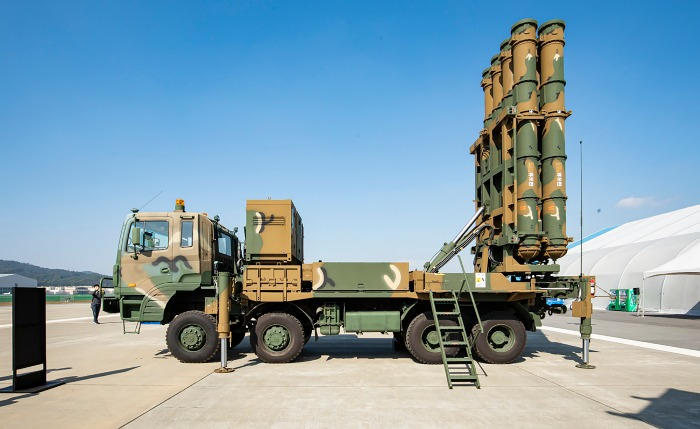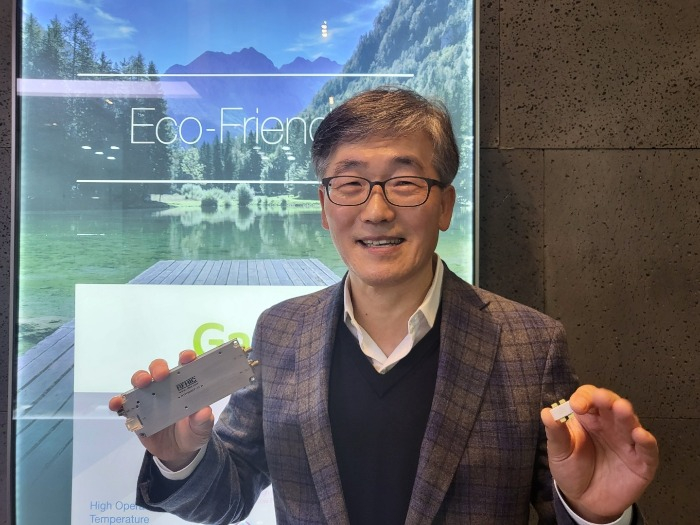Aerospace & Defense
ETRI bolsters semiconductor technologies for use in aerospace defense
The government-funded research institute succeeds in developing S band 300-watt gallium nitride semiconductor
By Sep 23, 2022 (Gmt+09:00)
3
Min read
Most Read
LG Chem to sell water filter business to Glenwood PE for $692 million


Kyobo Life poised to buy Japan’s SBI Group-owned savings bank


KT&G eyes overseas M&A after rejecting activist fund's offer


StockX in merger talks with Naver’s online reseller Kream


Mirae Asset to be named Korea Post’s core real estate fund operator



Daejeon-based Electronics and Telecommunications Research Institute (ETRI) is poised to further the development of semiconductor technologies for use in aerospace defense, which the South Korean government categorized as a sector of strategic importance to the nation.
Funded by the government, ETRI is a research institute under the Ministry of Science and ICT.
The research institute announced on Friday that it succeeded in developing an S band 300-watt gallium nitride (GaN) chip with its own technology. Gallium nitride is an extremely hard, mechanically stable wide bandgap semiconductor.
The New Jersey-based Institute of Electrical and Electronics Engineers labels the S band as a part of the microwave band of the electromagnetic spectrum covering frequencies from 2 to 4 gigahertz (GHz).
In other words, the S band crosses the conventional boundary between the UHF and SHF bands at 3.0 GHz.
The band is used for military radars, 5G mobile communications, Wi-Fi, and Bluetooth.
Gallium nitride is the ideal next-generation semiconductor due to its high output and speedy signal switching.
ETRI independently designed the structure of the gallium nitride transistor and manufactured the chip. It subsequently packaged the chip and successfully tested that it produces 300 watts of electricity or more than 10 watts per mm.
The output is higher than that of the commercially available semiconductor device boasting 8.4 watts per mm.
The gallium nitride semiconductor market is expected to grow 59% on average per year from the last year’s $120 million to $2 billion by 2027.

An ETRI official told The Korea Economic Daily that the latest technology can be applied to the Active Electronically Scanned Array (AESA) radars, often described as the eyes of military fighter jets.
An AESA is a type of phased array antenna, which refers to a computer-controlled array antenna.
In the AESA, each antenna element is connected to a small solid-state transmit/receive module (TRM) under the control of a computer.
Previously, ETRI developed 800V horizontal power semiconductors using a gallium nitride single crystal substrate in 2020.
Last year, it designed and processed a gallium nitride-based RF device and MMICs (Monolithic Microwave Integrated Circuits), core components of transmit/receive module for the radar system.
The latest S band gallium nitride semiconductor can also be applied to the Long Range Ballistic Missile Interception System (L-SAM).
L-SAM is the foundation for South Korea’s own missile shield dubbed the Korea Air and Missile Defense (KAMD), a terminal-phase, lower-tier, overlapping missile defense system.
LIG Nex1 joined forces with other firms to develop Cheonggung and exported it to the United Arab Emirates with additional exports scheduled to Saudi Arabia.
Cheonggung, also known as M-SAM, is a South Korean medium-range surface-to-air missile system that was developed by the Agency for Defense Development with technical support from Almaz-Antey and Fakel.

An employee with RFHIC Corp., a mid-sized Korean company principally engaged in the manufacture and sale of gallium nitride power amplifiers, explained that “It is quite meaningful that we were able to develop technology for 300-watt output domestically.”
The industry insider added what matters for AESA is to manufacture it in a way that it can produce high output in the smallest package.
Write to Hae-Sung Lee at ihs@hankyung.com
Jee Abbey Lee edited this article.
More to Read
-
 Aerospace & DefenseS.Korea’s first mission to the Moon, Danuri, enters transfer orbit
Aerospace & DefenseS.Korea’s first mission to the Moon, Danuri, enters transfer orbitAug 05, 2022 (Gmt+09:00)
2 Min read -
 Aerospace & DefenseDefense giants eager to bolster satellite business
Aerospace & DefenseDefense giants eager to bolster satellite businessFeb 11, 2022 (Gmt+09:00)
4 Min read
Comment 0
LOG IN


